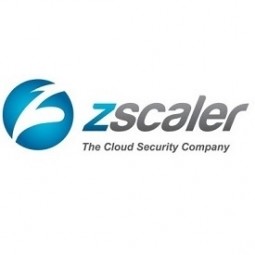技术
- 网络安全和隐私 - 网络安全
- 基础设施即服务 (IaaS) - 私有云
适用行业
- 玻璃
- 国家安全与国防
适用功能
- 产品研发
用例
- 人员跟踪与监控
- 时间敏感网络
关于客户
亨利·M·杰克逊军事医学促进基金会 (HJF) 是一家总部位于美国马里兰州的非营利组织,它支持军队和政府的科学研究项目,为约 1,500 个研究项目提供人力资源或财务等行政支持,但还管理 IT 并提供对高性能计算的访问。这些研究项目范围从癌症研究、战斗护理、备灾、临床和康复医学到传染病控制。在全球抗击 COVID-19 的斗争中,HJF 决心在两条战线上抗击这一流行病:支持正在研究创新对策的国内和国际合作伙伴,并通过以下方式确保其团队及其生活和服务的社区的安全。帮助减轻疾病的传播。
挑战
亨利·M·杰克逊军事医学促进基金会 (HJF) 是一家非营利组织,为军队和政府部门的约 1,500 个科学研究项目提供支持。这些项目涵盖癌症研究、战斗护理、灾难准备、临床和康复医学以及传染病控制等。在全球抗击 COVID-19 的战斗中,HJF 决心从两个方面抗击疫情:支持国内外合作伙伴制定创新对策,并通过帮助减缓疾病传播来保护其团队及其所居住和服务的社区的安全。为了实现这一目标,HJF 需要找到一种方法,让员工、研究人员和合作伙伴在过渡到居家办公的同时远程访问关键应用程序,同时继续为实验室的同事提供支持。
解决方案
HJF 以创纪录的速度向 600 名用户推出了 Zscaler Private Access (ZPA)。IT 团队一直在寻找替代 Citrix 的解决方案,并考虑使用传统 VPN。然而,当 COVID-19 来袭时,团队必须迅速采取行动。首席架构师提出了一个解决方案,可以让整个组织在两天内做好在家办公的准备。从第一次打电话到每个人都使用 ZPA,这个过程大约花了 48 小时。由 HJF 首席架构师领导的一个小团队与 Zscaler 团队密切合作部署了 ZPA。2019 年,HJF 为其地理分散的员工部署了 Zscaler Internet Access (ZIA),以集中互联网访问策略、实施控制并获得可见性。HJF 能够通过利用现有的客户端连接器部署快速启用 ZPA。
运营影响
数量效益

Case Study missing?
Start adding your own!
Register with your work email and create a new case study profile for your business.
相关案例.

Case Study
Data Capture for Afghanistan Forces
Electronic equipments on the field of Afghanistan provided information on the status of the vehicle and to identify potential threats surrounding it to the British Force. The monitoring and interpretation of this data requires robust and sophisticated digitization for data capture and communication.
Case Study
Enhancing Security and Compliance in Remitly's Global Money Transfer Service with Fastly
Remitly, an online remittance service, was faced with the challenge of securing its proprietary global transfer network. The company needed a security solution that could meet PCI requirements and protect customers' sensitive transactions through its mobile application. The solution had to be capable of defending against new and emerging attack types without impacting performance. Remitly also had to deal with irregular traffic patterns, such as a sudden spike in account transfers from a small network segment on the Pacific coastline of South America. The company needed to determine in real time whether such traffic indicated an attack or valid requests. A traditional web application firewall (WAF) would not be able to distinguish this traffic, potentially leading to customer frustration if the IP was blacklisted.
.png)
Case Study
Discrete Manufacturing Industries (Fiberglass Pipe)
The implementation of ERP software in a Discrete Manufacturing organization needs to be strategic, irrespective of its size and capacity. The client had already implemented an ERP system which fulfilled their requirements but was not efficient enough. Efficiency here meant Synchronized Planning, Updating and Multisite Planning. Planning at client’s place was done outside the ERP system. Lack of proper synchronization to the ERP system paved way to huge delays in the changes getting updated in the system. These delays caused disruption in achieving delivery schedules. Multisite Planning is a solution to an organization which has multiple production units (may or may not be geographically separated) and thus needs planning across these units to synchronize production activities within them. The client also has multiple factories and hence Production Planning control is very essential in their case. Since Multisite planning was not possible with Baan ERP system, this was another bottleneck for the client.

Case Study
Major Aerospace Company Automates Asset Management
The O&M division of an aerospace and global security company was using spreadsheets to manually track more than 3,000 assets assigned to students and staff. Maintaining audit trails for this high volume of equipment became increasingly time-consuming and challenging. The chore involved knowing precisely what equipment was on hand, what had been issued, its location and the name of the custodial owner of each item. Every aspect of this task was carried owner of each item. Every aspect of this task was carried out by individuals with spreadsheets. Manually documenting the full lifecycle of each asset added to the burden. This included tracking maintenance requirements and records, incidents and damages, repairs, calibrations, depreciation, and end-of-life data.

Case Study
Securing a Large Data Center in the EMEA Region: An IoT Case Study
A leading data-center operator in the EMEA region, with multiple facilities spanning over 25,000 square meters, faced significant security challenges. The operator experienced interruptions in their internal IT network due to unsupervised work of third-party technicians. Despite having a high-end building control system that provided 24x7 monitoring and control to all the building’s infrastructure, the data center was vulnerable from a cyber perspective as it was connected to the IT network infrastructure. The operator launched an urgent OT cyber security project that included both IT-OT network segmentation and OT network asset mapping and anomaly detection. The main objectives were to harden the security of the server systems, secure the facility’s power supply and server cooling system, strengthen the segmentation between building and operational systems, create a visual OT network map, and set up a system for presenting supply-chain attacks that may threaten the data center through equipment vendors’ maintenance activities.

Case Study
Leveraging Graph Technology for Enhanced Cybersecurity: A Case Study on MITRE's CyGraph
MITRE, a federally-funded, not-for-profit company that manages seven national research and development laboratories in the United States, was grappling with the challenge of managing an influx of cybersecurity data. The constant changes in network environments were impacting the security posture of U.S. government agencies. Intrusion alerts, anti-virus warnings, and seemingly benign events like logins, service connections, and file share access were all potentially associated with adversary activity. The cybersecurity researchers at MITRE needed to go beyond rudimentary assessments of security posture and attack response. This required merging isolated data into higher-level knowledge of network-wide attack vulnerabilities and mission readiness. The challenge was not the lack of information, but the ability to assemble disparate pieces of information into an overall analytic picture for situational awareness, optimal courses of action, and maintaining mission readiness. The team also struggled with fully comprehending a given security environment and mapping all known vulnerabilities.







